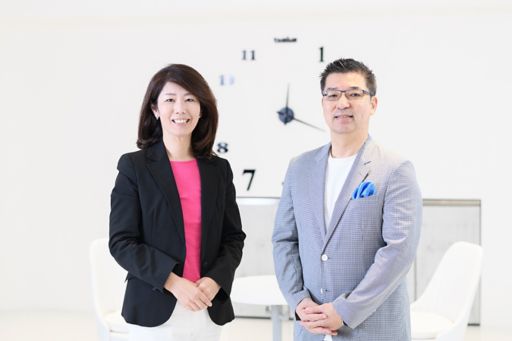“DX (Digital Transformation)” and the “shift to digital management” are top-priority issues for all companies. Management executives are more than ever required to draw up a new growth strategy for their company, including the innovation of their business, now that transformation is being easily accepted. What is necessary in doing so is the ability to envision and fantasize how technology will change their business and the value of their offerings.
In this article, we will introduce the discussions conducted between Yoshinami Takahashi, Corporate Executive Officer at Fujitsu Limited, and Masayuki Chatani of KPMG Ignition Tokyo on how technology will revolutionize our lives and economic activities and how Japanese companies will once again increase their global presence.
Contents
- Restoring the Global Presence of Japanese Companies
- Implementation of Data-Driven Management. Difference Stems from Sensitivity to “Standardization?”
- Advanced Technology and Innovative Viewpoints. What Remains is What to Do with Business Modeling.
- How to Scale Up the Most “Commendable” Technology?
- Digital Twins and Utilizing AI as a Management Assistant
- Profile of Interviewee
Restoring the Global Presence of Japanese Companies
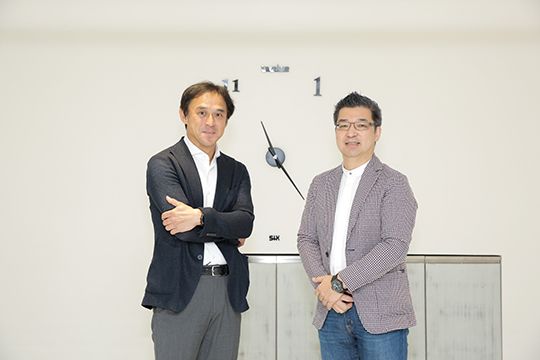
(Yoshinami Takahashi, Corporate Executive Officer of Fujitsu Limited (left), Masayuki Chatani, Representative Director & CEO of KPMG Ignition Tokyo and CDO of KPMG Japan (right)) *Professional affiliation and official position in the article are at the time of publication.
Chatani: In the company I worked for prior to my previous job, we were colleagues who started working in the same year. You worked actively in overseas markets before moving to a foreign-affiliated company, so I saw you as “a person dedicated to overseas markets” and I thought that you would master your career in this area. So, I was honestly surprised when I heard that you had moved to Fujitsu, which is a representative Japanese IT company, in June 2021. Please tell me, what made you decide to move to Fujitsu?
Takahashi: Well, I worked at the company prior to my previous job for 27 years and I was able to accumulate a broad range of experience in overseas markets. At the time, Japanese companies were achieving significant growth and I could sense that their presence was increasing tremendously in the global market.
On the other hand, the last ten years of my career at that company was a period of confusion. I think it was the same for other companies. The company I was with at the time was struggling while going through various business changes, but it is now finally trying to regain its global presence in a new way.
I was watching this process while working in my previous job at a foreign-affiliated company and continued to have the desire “to work at a Japanese company once again and make a contribution.” I learned many things from the operation of the foreign-affiliated company but I felt that there was more that I could do through work. The reason why I moved to Fujitsu was that I wanted to contribute to the globalization of Japanese companies for the rest of my career. That’s putting it coolly, isn’t it? (laughs).
Chatani: It has been just about five months since you moved to Fujitsu but is there anything that is different from what you had imagined before joining the company?
Takahashi: My impression is that there is a bit of a gap. For instance, I had thought that Japanese companies were implementing digital management and utilizing data a little more but now I see that this is not the case.
Fujitsu is indeed advancing toward data-driven management now but at my previous job, the company was already advancing on the frontline of data-driven management. For instance, they were using machine learning and running the business by utilizing centralized data, which everyone including the top management were able to access. Having been in such a work environment, it is easy to see the differences between not only Fujitsu but Japanese companies as a whole and global companies.
Implementation of Data-Driven Management. Difference Stems from Sensitivity to “Standardization?”
Chatani: I think that one of the reasons why there are differences in the implementation of data-driven management is that Japanese companies have not been able to sufficiently standardize data yet.
Takahashi: I think that foreign-affiliated companies are good at standardization or, rather, they have a good ability to conceive KPIs (Key Performance Indexes). In other words, they are skilled at determining what is important for the business. For instance, they try to determine and standardize the core KPIs including not only sales but also elements such as consumption. I feel that they are very good at creating common governance and making it work.
In a sense, Japanese companies may be right-brained types. They seem to have a strongly rooted culture of entrusting each business entity to operate freely rather than taking control of them. Being able to create various products spontaneously is undeniably their strength but if each entity operates freely and vigorously in an unstandardized state, their investments become decentralized. In short, they will be in a decentralized and unselected state. On the other hand, at foreign-affiliated companies, for instance, at my previous job, they were driving well-focused operations by strengthening governance and clarifying “which areas to focus on and which areas not to focus on.”
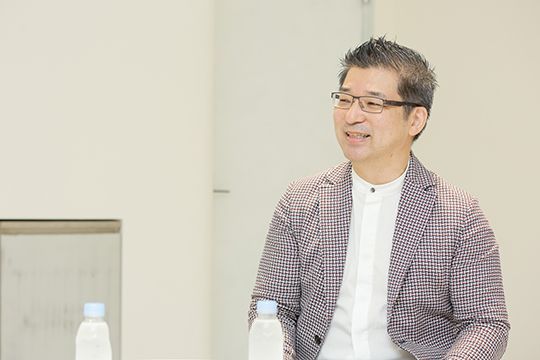
Chatani: If I can discuss standardization from a somewhat different point of view, I think that Fujitsu is a company that contributed greatly to standardization in Japan. The character codes for word processers taught us how much standardization affects our lives.
For example, I heard that there are close to 30 different Chinese characters for “nabe” in “Watanabe,” which is a Japanese surname. There was a project to research all the different characters and decide “Let’s assign this character type to this character code.” If these efforts had not been made, it would have been impossible to process the Japanese language with computers. Thanks to the efforts of various companies including Japanese manufacturers, the character code system was developed for creating word processors and we can say that we are now benefiting from their efforts.
While the digitalization of handwritten characters was one of the earnest desires of the Japanese industry, they knew that it was not easy to standardize the Japanese language, which is different from strings of alphabetical characters. Though they succeeded in pulling this off, we can imagine that there were considerable difficulties in the process. If the Japanese language had not been standardized, major overseas companies or organizations might have determined an international standard “on their own.”
Takahashi: I guess disputes over the standardization of character codes and media formats in the past have now moved on to data formats.
Chatani: That’s right. Talking about standardization, a movement to standardize accounting data into XML to make them computer processable is beginning to appear now. As materials that need to be worked on are basically processable as long as there are data, the movement to leave these processes to machines and have professionals focus on more advanced skills will probably become a reality.
If this movement is expanded to all industries, Japanese companies and industries will be able to focus on their essential and important work and services. I hope that Fujitsu will build this platform and accelerate this movement to enhance competitiveness.
Advanced Technology and Innovative Viewpoints. What Remains is What to Do with Business Modeling.
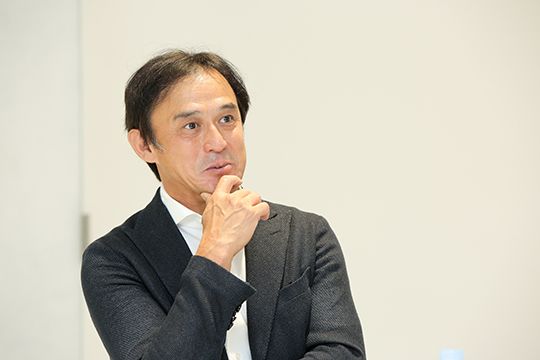
Chatani: From the viewpoint of an engineer like myself, I believe that it was Fujitsu that first created Japanese computers. It is one of the companies that have achieved very many epoch-making innovations in Japanese history and I think it is one of the top Japanese companies. Its attitude is like that of a “group of wandering samurai” and I always felt that the company has a culture “to do something because there is no precedent.” Having worked in two Japanese companies, are there areas that you feel are common in both companies?
Takahashi: In regard to common points, the first thing that comes to my mind is the field of computing, represented by “Fugaku.” Also, what surprised me after joining the company was that there are a number of individual business entities including group companies and they are undertaking various challenges.
In the areas I am in charge of, the company is taking on challenges by soundly determining new things, and I think that the company has a great determination to enhance the added value of what they are working on. However, I think the most difficult things is that the business modeling for promoting scalability and commercialization is not so advanced yet.
Chatani: You’re right. Taking supercomputers, for example, the “K computer,” which is the predecessor of “Fugaku,” uses SPARC (Scalable Processor Architecture) as the CPU, which I hear, was redefined based on what was developed by Sun Microsystems. I think that this never-give-up attitude and persistence is amazing in a good sense.
When I was working for a Japanese company, I was exposed to words and ideas such as “even if the business itself disappears, the technology can be connected.” Indeed, as technology is basically associated with people, there are cases where technology will be discontinued as personnel leave the company when the business is closed.
I believe that technologies are being inherited in an unbroken line at Fujitsu. I am interested in how you are managing people in this sense. I understand that there were difficult times in the past and various actions were taken. How is the company managing people?
Takahashi: First of all, there are certainly many good technologies at Fujitsu. For instance, “Digital Annealer” is a new technology that resolves combinatorial optimization problems at high speed by applying quantum-inspired technology. Looking at such technologies, I think that “this company is indeed a technological company.” The trend to substantially pass on technology is also soundly rooted within the company.
However, the fact that customization for customers is playing the main role in our business still needs to be reviewed. The area where we are lacking is the ability to use technology to think of generic utilization cases and deploy them on a wide scale. I think that we will be able to demonstrate greater global competitiveness if we can supplement this area a little more.
Chatani: I completely agree with you. I had the opportunity to listen to a presentation by Fujitsu Laboratories a little while ago. The presentation was extremely interesting and there were many things that I thought had great potential for development if they could be turned into a business.
I heard that Fujitsu Laboratories have been absorbed and are under the direct control of the CTO. I can imagine that it will be easier for these technologies to be commercialized now.
Takahashi: That’s right. The idea is to place the laboratory close to the business entity and incorporate their technology more into our solutions and services. The executive members who are in charge of our business group are indeed discussing right now how to utilize seeds, decide on a core business rather than having distributed businesses, and scale it up by making use of insights at various divisions.
As the schemes envisaged by Fujitsu may not be implemented with the technology of Fujitsu alone, we hope to work on them by focusing on certain areas such as schemes that require knowledge from outside the company and schemes that utilize in-house proprietary technology.
How to Scale Up the Most “Commendable” Technology?
Chatani: Now that Fujitsu’s business is about to change, which technology do you think is the most “commendable” to your eyes?
Takahashi: That’s a very good question. What I think are interesting are the “Digital Annealer” and the supercomputer “Fugaku.” How to democratize them will be our challenge going forward.
We are now making efforts in the drug development industry. It is now common knowledge that drug discovery takes about 10 to 15 years to develop, with a budget of 200 to 240 billion yen.
By utilizing multiple technologies, such as a supercomputer or a Digital Annealer, to reduce the TTM (Time to Market) by half, we may be able to deliver drugs for patients with intractable diseases more easily than before.
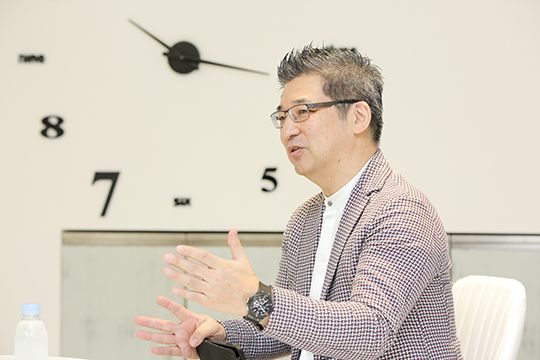
We intend to focus on these things, and we are actually starting research with several partners using technologies such as supercomputers, Digital Annealers and AI.
Chatani: I understand that the speed of supercomputers has become five times faster in five years. I hear that it has become 1,000 times faster in 15 years and one million times faster in 30 years. As there is no human being who can increase the speed of their calculation by one million times in 30 years, this means that computers are clearly superior to human beings in this area. I believe that the time axis for developing drugs will be shortened for sure.
By the way, what kind of process takes time in developing drugs?
Takahashi: The basic research is the most important and takes time. We select the molecular structure, enter the pre-clinical trial phase, conduct clinical trials and then finally introduce new drugs. However, if we can incorporate quantum technology and computing in the molecular structure selection process, I believe that we will be able to shorten the time required for the process.
Also, as knowledge that has been accumulated so far has not been digitalized, we think that we can change this by utilizing a digital platform.
Chatani: Is this like changing the condition inside the test tube in the laboratory to a digital twin?
Takahashi: That’s right. We are hoping that we will be able to reduce time and cost by doing so.
Digital Twins and Utilizing AI as a Management Assistant
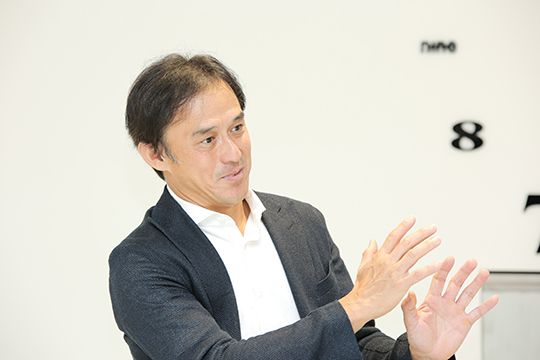
Chatani: Talking about digital twins, I am seriously thinking of “posting a digital twin of our company on the supercomputer.” Professional services provided by KPMG help solve various issues faced by companies. However, if we can provide a service with which simulation is possible using a digital twin, it should be possible to think of various scenarios at management meetings and give them a try.
If high-speed processing is possible and real-time processing can be ensured while multiple calculations can be performed in a huge space like that of supercomputers, I think that we will be able to instantaneously make future forecasts that include geopolitical risks due to changes in international affairs. It will be nice if Fugaku can be used in such situations.
Takahashi: Utilizing Fugaku by introducing it into management in this way is absolutely great. As AI is now being increasingly introduced in areas such as demand forecasting, forecasting what will happen based on the “current” situation is an area worth working on.
In order to enhance accuracy for such uses, the data pipeline will become important. If we can centralize data and feed them into AI for analysis, it has been proven to some extent that results with little deviation can be obtained.
Chatani: One more thing that KPMG wants to do by using supersmart computers represented by supercomputers is to graphically show the professional knowledge structure.
A lot of the knowledge in professional services is systematized and the directory structure is very well established. Though there are a few exceptions, the structure is basically sound so we are starting to work on a project to graphically express knowledge.
By doing so, it will be possible to conduct a graph search rather than a full-text search. Therefore, if all kinds of knowledge are input into a supersmart computer, such as the data of all the books published by KPMG AZSA, a professional AI management assistant will be able to respond to any questions we ask.
We may start out by developing AI assistants for segmented area of expertise such as one with knowledge of IFRS®Standards (International Financial Reporting Standards). However, if the areas of expertise increase, it may be possible to interconnect these professional AI assistants and have them communicate with each other, and then perhaps the AI assistant will respond, “I don’t know the answer to this question but I will ask other AI assistants.” In such cases, a supercomputer, which has a suitable vast space and can conduct distributed processing, will have an advantage.
Takahashi: I see. In that case, this approach may be applied to legal areas as well. In recent years, there has been an increase in cases where fines are imposed due to extraterritorial application of overseas laws. Japanese companies therefore need to pay attention to trends regarding not just Japanese laws but those of other countries as well.
Chatani: For legislative use, I think that management executives will be interested in “which business will be affected the most by the revised regulations.” For instance, if a new energy law is enforced in California, they would want to have insights regarding matters such as what business will be affected by the new law.
Professionals are now trying to work out “is this area ok” by using manual analysis. However, if there are documents, it should be possible to promptly identify risks by inputting them in the computer.
This is like an in-car navigation system that tells us “it’s dangerous if you go that way” or “this road is a dead end.” I am envisaging that such computers will be developed in Japan.
Takahashi: Automation alone will not be sufficient but its value should increase if we can output something.
Chatani: I talked about the processing speed earlier but the space that can be retained by a computer is becoming expansive and starting to exceed the space of a human brain. This kind of change is what lies behind the fact that humans are no longer a match for AI in things with established rules such as games of go and shogi.
To continue managing a company in the present age, it is necessary to make decisions by making use of an enormous amount of data including overseas situations that are updated in real time. This will probably be impossible for an individual to manage. Humans need sleep and may not be able to make decisions immediately due to environmental factors. In such cases, things will change considerably if we can say “we will entrust everything to AI for the next 10 hours” in advance.
Modern cars are equipped with a system that controls the front wheels with a computer when slipping of the rear wheels is detected. This is because it is almost impossible for humans to respond instantaneously in such a situation. I think that features like this safety mechanism, which carries out what humans cannot do, is what is required of computers.
Takahashi: That would indeed be a management assistance system. As the idea to use computing in the world of management has not been considered yet, it may be an undeveloped market.
Meanwhile, regarding utilization in professional areas, a diagnostic support system has been realized already. Computers that support doctors when they perform image analysis and diagnosis have become common. However, I have not heard any example of computers venturing into the area of supporting the management decisions of managers.
Chatani: One possible reason for this is that supporting image analysis diagnosis is ultimately a substitute for identification. It only automates the tasks and I think that technology is not yet being used in the area of making decisions more sophisticated.
If this changes, computers will be able to instantly review all the scenarios from A through E whereas humans can only review scenarios A or B within a limited timeframe. If this becomes possible, the possibility to move closer to the answer will increase. Of course, I think it is okay for humans to make the final decision; for instance, “the correct answer according to the decision made by the computer is this but the management decision is this.” We have not entrusted this area to computers yet.
Takahashi: Indeed, management decisions are made in a “consulting, confirming and consensus-building” style.
Chatani: That’s right. The fact that past successful cases are referred to excessively in management decisions is also a problem. An important role of humans will probably be to doubt conventional wisdom and put completely different indicators into the computer.
In this sense, it is the same as what we have been doing. However, the speed will change as a result of using computers.
Takahashi: I see. Your perspective is quite inspiring.
Chatani: Personally, I would love to see this created in Japan, hopefully by Fujitsu.
Profile of Interviewee
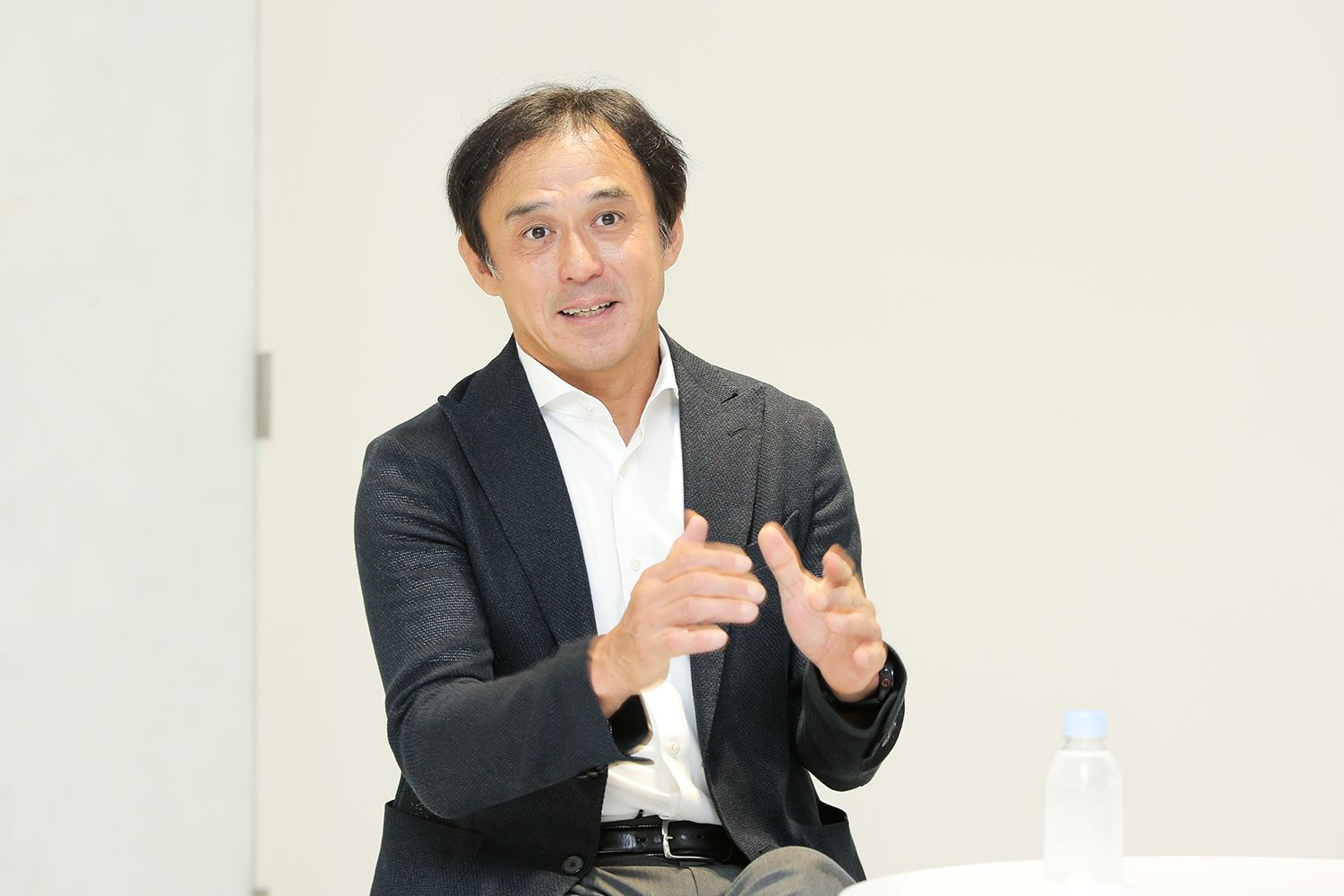
Yoshinami Takahashi
Fujitsu Limited
Corporate Executive Officer
EVP, Head of Digital Software & Solutions Business Group
Joined Sony Corporation in 1987. At the frontline of its overseas operations, Sony was responsible for the region reorganization at the time of the European Monetary Union, Sony's entry into the Blu-ray Disc market in conjunction with Sony Pictures, and the introduction of the contents service, which marked a turning point in Sony's product partnership. Joined Microsoft Japan Corporation in 2014, has been leading the DX support for enterprise customers as an Executive Managing Director since 2020, as well as developing cloud markets and collaborating with partners since 2015. Since June 2021, as an Executive Managing Officer of Fujitsu Limited, I positioned myself at a global company in Japan to lead the Digital Software & Solutions Business Group with the goals of "revitalizing Japanese companies and society" and solving various social issues.
Follow us on KPMG Ignition Tokyo LinkedIn for the latest news.
Connect with us
- Find office locations kpmg.findOfficeLocations
- kpmg.emailUs
- Social media @ KPMG kpmg.socialMedia



